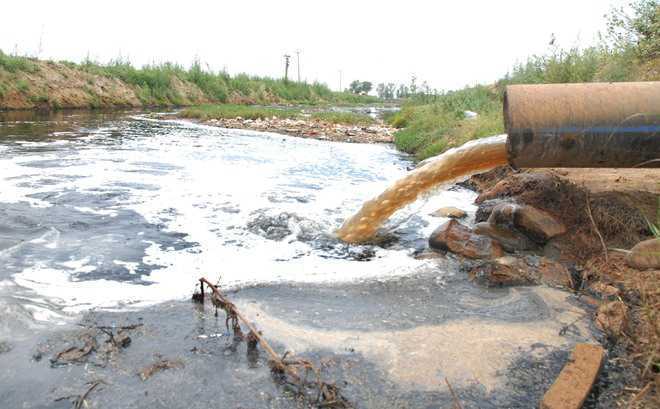Central Pollution Control Board (CPCB) in association with State Pollution Control Boards (SPCBs) / Pollution Control Committees (PCCs) in different States/Union Territories (UTs), have been monitoring the water quality of rivers and other water bodies across the country through a network of monitoring stations under the National Water Quality Monitoring Programme. Based on water quality monitoring results, pollution assessment of rivers has been carried out by CPCB from time to time. As per the last report published by CPCB in September 2018, 351 polluted stretches were identified on 323 rivers based on monitoring results in terms of Bio-chemical Oxygen Demand (BOD), a key indicator of organic pollution.
Improvement in water quality has been observed in 180 out of 351 polluted river stretches (PRS) identified during year 2018. 106 river stretches out of these 180 PRS have come out of the list of polluted stretches as per details given at Annexure-I and remaining 74 have shifted to lower priority class as per details given at Annexure-II. As per the water quality monitoring carried out by CPCB for 2019 & 2021 on 279 rivers, 311 polluted river stretches have been identified.
As per the seventh schedule of Constitution of India (Article 246), ‘Water’ is a State subject, and it is the responsibility of the States/UTs to ensure the cleanliness and development of rivers within their jurisdiction. For conservation of rivers, this Ministry has been supplementing efforts of the States/UTs by providing financial and technical assistance for abatement of pollution in identified stretches of rivers in the country through the Central Sector Scheme of Namami Gange for rivers in Ganga basin, and Centrally Sponsored Scheme of National River Conservation Plan (NRCP) for other rivers. Under NRCP works relating to interception & diversion of raw sewage, construction of sewerage system, setting up sewage treatment plant (STP), low cost sanitation, river front/bathing ghat development, etc are taken up.
NRCP has so far covered polluted stretches on 36 rivers in 80 towns spread over 16 States in the country with the sanctioned cost of projects as Rs. 6,248.16 crore, and sewage treatment capacity of 2,745.7 MLD created. Under Namami Gange programme, 406 projects, including 176 projects for sewage treatment of 5,270 MLD and a sewer network of 5,214 km, have been sanctioned at a cost of Rs. 32,898 crore against which sewerage treatment capacity of 1,858 MLD has been created so far. The sewage treatment capacity created result in reducing pollution load being discharge in the various rivers.
In addition, sewerage infrastructure is created under programs like Atal Mission for Rejuvenation & Urban Transformation (AMRUT) and Smart Cities Mission of Ministry of Housing & Urban Affairs.
Steps taken by the Government to stop discharge of industrial effluents into rivers inter alia, include issuance of notification of specific discharge standards, revision of the criteria for categorization of industries and issuing directions to all SPCBs/ PCCs to adopt the same, issuance of consent to establish/consent to operate by the SPCBs/PCCs, based on Comprehensive Environment Pollution Index (CEPI) identification of critically polluted areas to take necessary measures through time-targeted action plans, regular inspections of Grossly Polluting Industries (GPIs) by CPCB for compliance verification, installation of Online Continuous Effluent Monitoring System (OCEMS)for assessment of effluent quality and compliance status. In addition, the industries are encouraged to reduce their waste water generation by technological advancement, reuse/recycle of wastewater and maintain Zero Liquid Discharge (ZLD) wherever possible.
As per the provisions of Environment (Protection) Act, 1986 and Water (Prevention & Control of Pollution), Act 1974, industrial units are required to install effluent treatment plants (ETPs) and treat their effluents to comply with stipulated environmental standards before discharging into river and water bodies. Accordingly, CPCB, SPCBs and PCCs monitor industries with respect to effluent discharge standards and take punitive action for non-compliance under provisions of these Acts.
Besides, in compliance of the orders of National Green Tribunal (NGT) in Original Application No.673/2018 regarding rejuvenation of polluted river stretches in the country, States/UTs are required to implement approved action plans for restoration of the polluted stretches in their jurisdiction as identified by CPCB and published in their report of 2018, within the stipulated timelines. As per the orders of NGT, regular review on implementation of these action plans is undertaken in the States/UTs and also at Central level by Secretary, Department of Water Resources, River Development and Ganga Rejuvenation, Ministry of Jal Shakti, Govt. of India.
This information was given by the Minister of State for Jal Shakti, Bishweswar Tudu in a written reply in Rajya Sabha today.










